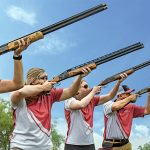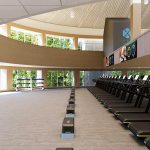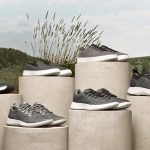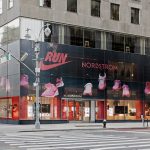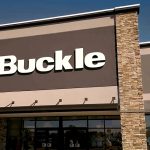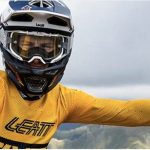While business is the excuse we use to travel to Salt Lake City twice a year, the highlight of the show season is always the chance to check out the greatest new gear. There certainly was an abundance of eye-opening innovation at this years summer market with many companies getting into the lightweight market for the first time.
The main trend coming from hardgoods companies is the transformation of lightweight gear from a trend or a niche category into an established, almost mainstream category that was first envisioned by brands like GoLite. The company established itself as a lightweight brand, and through its education process has taught retailers the advantages of dedicating floor and wall space to merchandising only the lightest of lightweight gear. We now see some retailers actually dedicating entire stores to only lightweight gear.
Many of the brands getting involved in the lightweight marketing game prove that the movement has gone beyond the core user and is becoming thoroughly entrenched in the mainstream. Weight has always been an issue for backcountry travelers. The Complete Walker, first published in 1968 and now in its fourth edition, touted the advantages of counting grams and leaving everything but the bare essentials at home. While vendors have been pushing lightweight gear for many years now, the response from retailers to lightweight branding has brought several new companies into the game this year.
Kelty introduced three new lightweight tents with some interesting new design technology that incorporates mini-strut poles sewn into the tent. This allows for easier pitching and guying of the non-free standing tents. The Stick is the lightest tent from Kelty at 2 pounds 8 ounces, with one primary pole near the center and three of its “strut” poles at the head and foot.
TNF markets their “Flight” series to the multi-sport and lightweight crowd, but they have recently stepped up their efforts in the lightweight backpacking category by offering two separate ultra-light packages. The first, designed for solo trips, weighs in at just 6 lbs. for the Solo 12 tent, Propel sleeping bag, and Skareb 40 backpack. The second, designed more for a two person team, weighs in at 7lbs. 14 oz. for the Spectrum 23 tent, Beeline sleeping bag, and Skareb 55 backpack.
The North Face is supporting both of these packages with POP for retailers to communicate the advantages of lightweight backpacking to consumers.
The Spectrum series of tents have a story behind them as well. By involving Formula 1 engineers in the design process, TNF was able to create a line of one to three person tents that can withstand winds between 95 and 130 miles per hour and weigh between 2 pounds 2 ounces and 4 pounds 12 ounces.
Sierra Designs launched their Baku hybrid single-double-wall tents using 40-Denier siliconized Nylon in single-wall areas and mesh in double-wall areas for reduced condensation. These two-door, freestanding tents use the DAC NSL Featherlite poles, and while they are not the lightest on the market, the one-person model only weighs in at 3 pounds, the two person is 4 pounds, and three-person option is 4 pounds 11 ounces.
ArcTeryx never really chased after the ultra-light market in the way other established brands have been over the past five years, and nowhere was this more evident than in the backpack category. The companys Bora line has been its mainstay for nearly ten years, and while many consider these packs to be the most comfortable on the market, by todays standards they are quite heavy.
Arcteryx still says it is not chasing after the ultra-light market, but they have designed packs that are considerably lighter than the Bora and actually carry better as well. The amount of innovation in these packs will bring the company to the forefront in technology for years to come.
The new Acrux climbing packs and Naos Trekking packs give a radically different aesthetic high point for backpack designers to hit and this was done with only two pieces of fabric in the main pack body.
GoLite continues to drive the lightweight movement with several new marketing initiatives to support their products. The company will focus on three main activities for these initiatives fast packing, trail running, and adventure racing. With teams of athletes in each of these key areas, the company is creating a grassroots campaign that is elevating the position of the company.
The fast-packing initiative includes the new Intuition and Perspective packs supported by the “The Fast-packing 101 Road Show” and the “Two Seas, Two Feet” road show. In trail running, GoLite has expanded their DriMove performance layers and the company is sponsoring Buzz Burrells “Buzz Project” slide show. GoLite introduced their new Multi-Sport Pack for adventure racing and is sponsoring the “Weekend Warrior” road show.
Gregory has also expanded its Antigravity line to be more inclusive, with the first womens specific adventure racing pack, the Arreba. The company also added the Iso, a pack that fills the lightweight hydration-ready daypack niche at 1200 cubic inches.
The biggest news from Gregory does not come out of its lightweight category, but rather its new suspension system, called the Response. By combining a single aluminum stay with a frame-sheet and new “independently camming” waist belt panels, the designers have managed to create a pack that is easier to fit and carries better than traditional suspensions (See BOSS_0529 for a complete review of the backpack market).
Mountain Hardwear created quite a buzz around their new Exodus series of backpacks that incorporates some radically different frame technology to create a pack that provides comfort and mobility. Ranging from 3 lbs. 10 oz. to over 6 lbs. the Exodus packs are not the lightest on the market, but they do live up to MTHs reputation for building functional, bombproof gear, and designer, Charles Mosely, created one of the most comfortable shoulder harnesses on the market.
While the Exodus series received much of the attention on the floor, there is much more to this line of packs. Mountain Hardwear also designed three other series the Objective for alpinists, the Aspiration backpackers who favor more traditional internal frame suspensions, and the Reality Check, a line of urban packs.
With 15 individual models for both men and women, this gives MTH a comprehensive range of products to claim a piece of the backpack market.
Mountain Hardwear also added some new sleeping bags to their lamina series. Introduced at last years Summer Market these entry-level sleeping bags have quickly become MTHs best sellers, and this year they added -15 and -30 degree products to the line.
MTH is seeing success not only in these lower price-point bags, but also in the top-end expedition down bags further proof that middle price-point sales are fading industry wide. MTH also introduced several down bags and several car-camping models.
Backpacking and camping stoves also saw some innovation, which will likely continue over the next few years given Cascade Designs exclusive agreement with Vapore in which Cascade will immediately set up a Capillary Force Vaporizer manufacturing line at its facilities in Seattle, Washington. This will allow MSR to bring the CFV stove it showed at the winter market back to market.
Brunton is placing a new focus on family camping with its Wind River Range. This is possibly the ultimate, price-is-no-object, car-camping stove with an integrated, removable cutting board, and matte aluminum integrated case.
Jetboil is also focusing on group camping, but going a very different route. The companys new group cooking system offers a larger pot with a heat exchanger that integrates nicely with their existing Pot Support. Dwight Aspinwall, President of Jetboil, told BOSS that the company has more than doubled in size over the past year, and now his team is focusing on continued product innovation and international expansion.
Perhaps the coolest new accessory at the show came from one of the smallest companies, Guyot Designs. The company is set up as a “safe haven for inventors.” The owner, Josh Guyot, runs the go to market process, including manufacturing, marketing, and sales.
This year, among many other innovations – including some long-handled camp cookware designed to work in tangent with a Jetboil – Guyot introduced a lid that fits standard wide-mouth water bottles and turns them into a lantern via a cluster of LEDs. The light works with or without water in the bottle and right side up or upside down.
The big news from the travel market was Eagle Creeks re-launch of the Clive brand in the outdoor world. Previously, Clive was focused solely on the action sports market with lifestyle bags. Now, the brand will serve a dual purpose action sports and outdoor lifestyle packs and bags.
The whole line has a much edgier, youthful feel than much of the travel market, and designer/brand director Roger Sgarbossa has added some unique materials, textures and graphics to even more interesting retro and urban packs. The brand brought some real excitement to Eagle Creek, and the Clive corner of the booth was consistently packed with retailers.
Eagle Creeks product also saw some upgrades over last year. The companys Exploration Systems line gives travelers the durability of expedition weight gear, but it is 25% lighter, while the Centerline series, is half the weight of conventional luggage.
Osprey has also entered the travel market with their distinctive clean design lines. The Soujourn and Merridian both offer the convenience of rolling luggage with a hidden backpack suspension system. The aesthetics of the packs, along with their functionality, will certainly make them stand out on the retail floor.
Finally, in the continuing Rack Wars saga, Thule raised the bar in the customer service end of their business by offering a lifetime warranty and introducing a new retail technology. The Matchmaker program brings touch screen kiosks to the retail floor that allows consumers to not only choose the correct rack, but also lets them see how it will look once it is installed on their car. The company also redesigned Sportworks Hitch-mount carriers to give them more of a Thule aesthetic.
Yakima is focusing on its reorganization, but is also making some impressive steps in the design department. Now that the sales, marketing, and administrative teams have only one brand to focus on, there will be some real competition in this market. The company unveiled two roof-top bike carriers that are great examples of what we can expect from the company in the future clean, modern lines coupled with user-friendly, functional technology.
While the past few years at ORSM have been more evolutionary in nature than revolutionary, this year gave buyers more than enough innovation to create some excitement on the retail floor, whether it comes from new product or new marketing initiatives. The industry seems to gaining more momentum every day.

